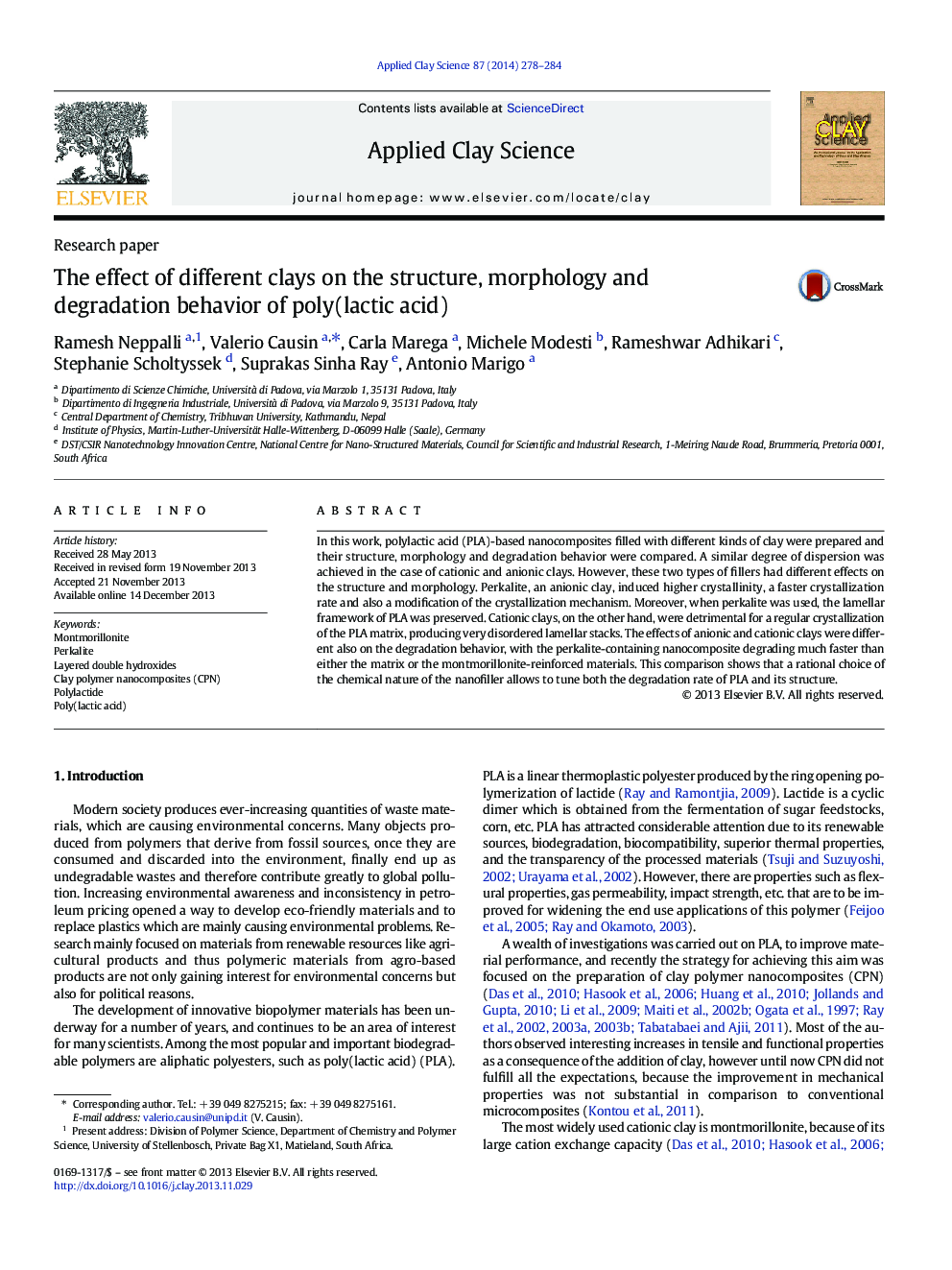| Article ID | Journal | Published Year | Pages | File Type |
|---|---|---|---|---|
| 1694976 | Applied Clay Science | 2014 | 7 Pages |
•Polylactic acid (PLA) was filled with different kinds of clay.•Perkalite increased the crystallinity and preserved the lamellae of PLA.•Perkalite modified the crystallization mechanism of PLA.•Cationic clays were detrimental for regular crystallization of the PLA matrix.•Perkalite increased the degradation rate of PLA.
In this work, polylactic acid (PLA)-based nanocomposites filled with different kinds of clay were prepared and their structure, morphology and degradation behavior were compared. A similar degree of dispersion was achieved in the case of cationic and anionic clays. However, these two types of fillers had different effects on the structure and morphology. Perkalite, an anionic clay, induced higher crystallinity, a faster crystallization rate and also a modification of the crystallization mechanism. Moreover, when perkalite was used, the lamellar framework of PLA was preserved. Cationic clays, on the other hand, were detrimental for a regular crystallization of the PLA matrix, producing very disordered lamellar stacks. The effects of anionic and cationic clays were different also on the degradation behavior, with the perkalite-containing nanocomposite degrading much faster than either the matrix or the montmorillonite-reinforced materials. This comparison shows that a rational choice of the chemical nature of the nanofiller allows to tune both the degradation rate of PLA and its structure.
